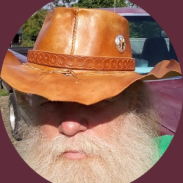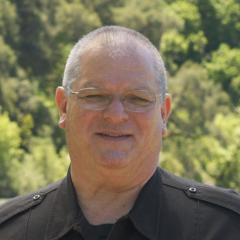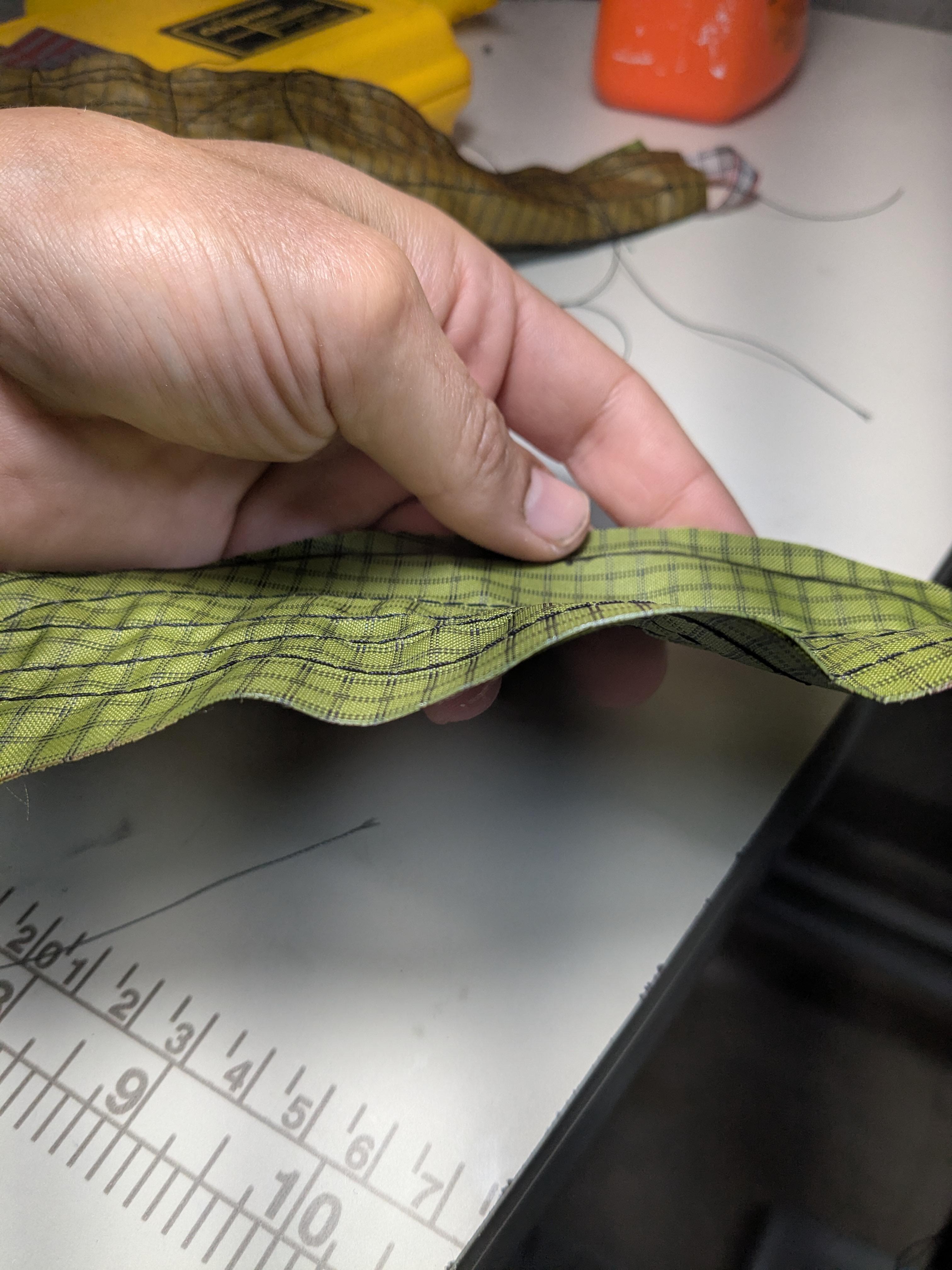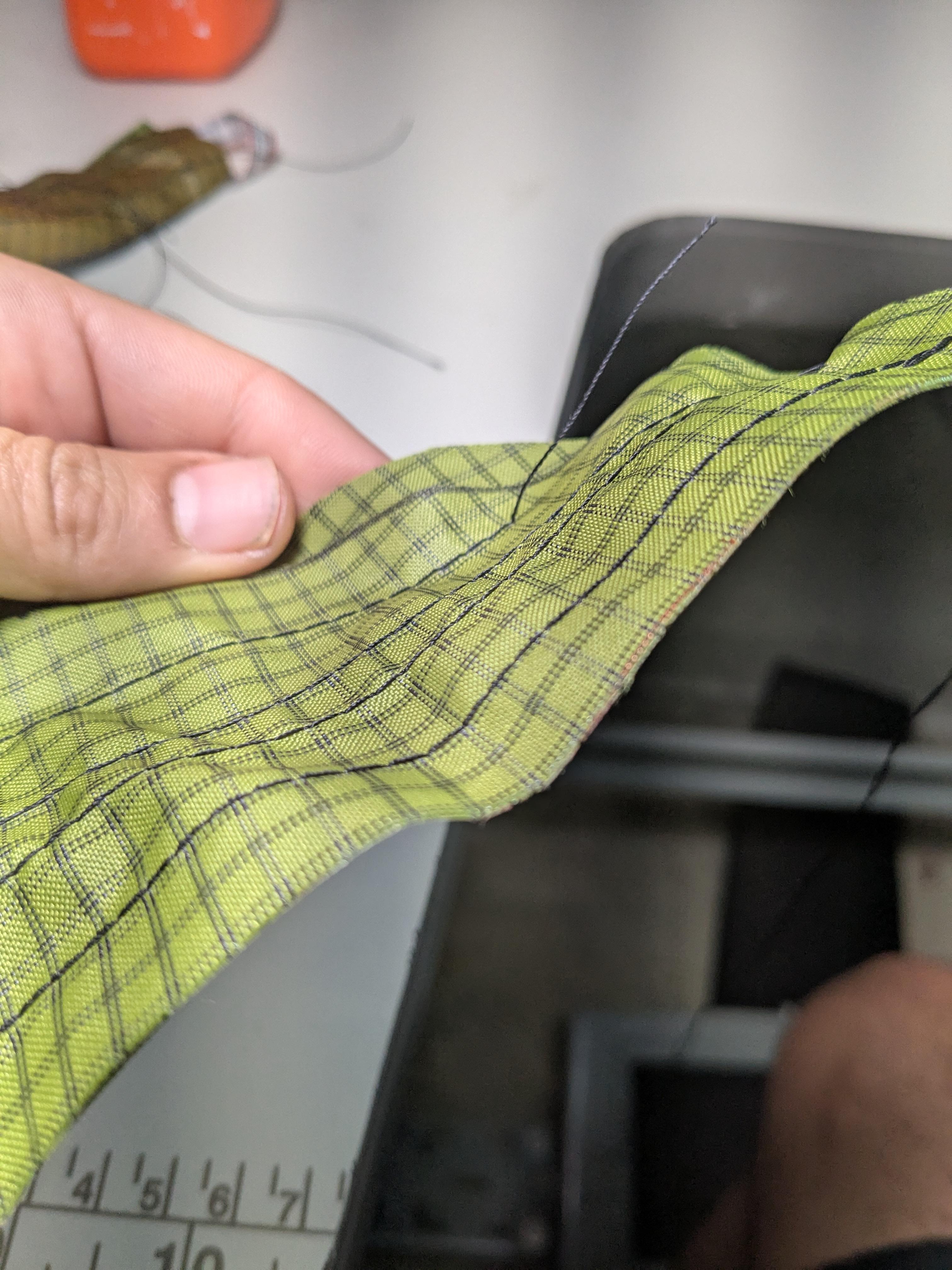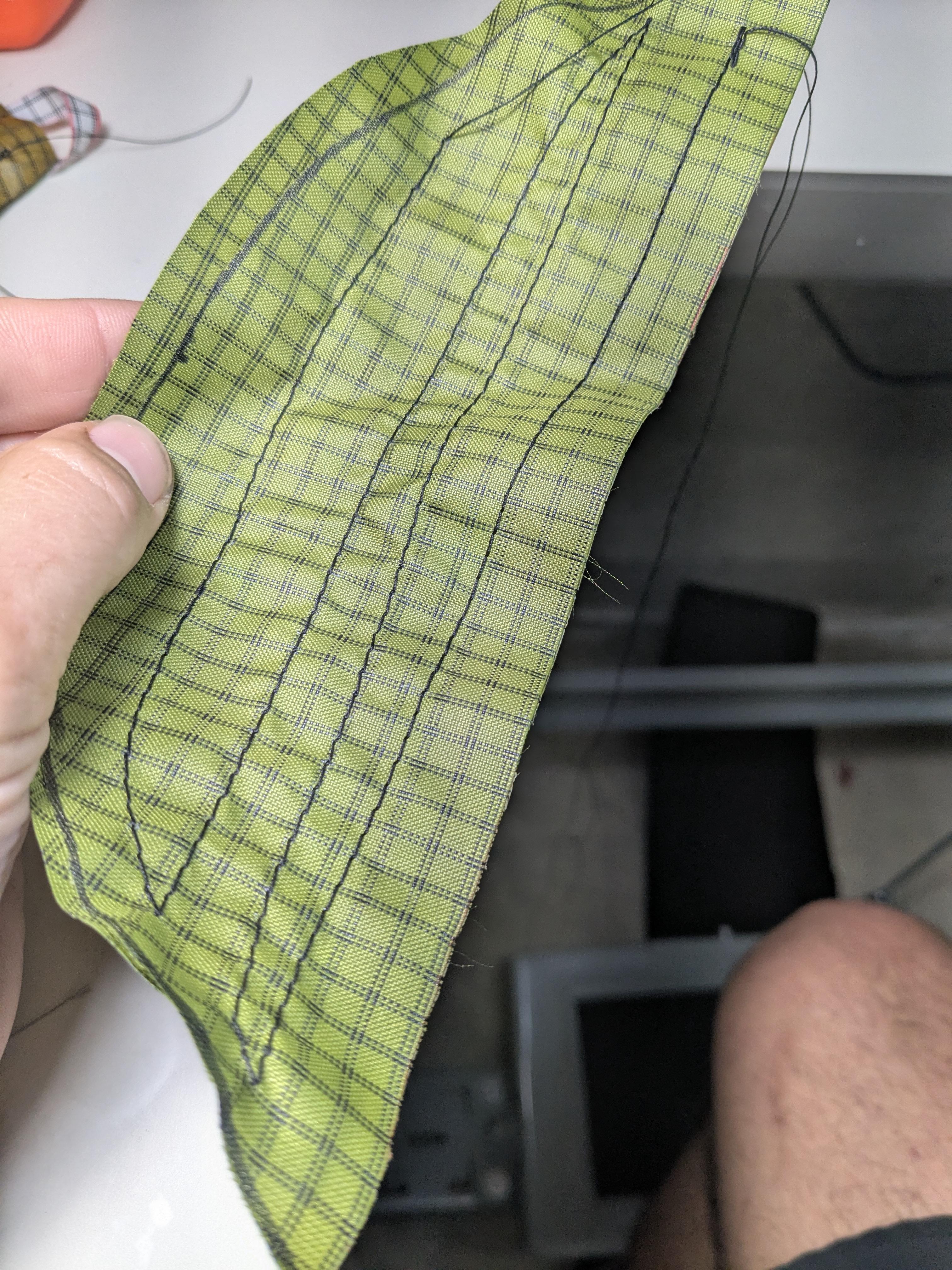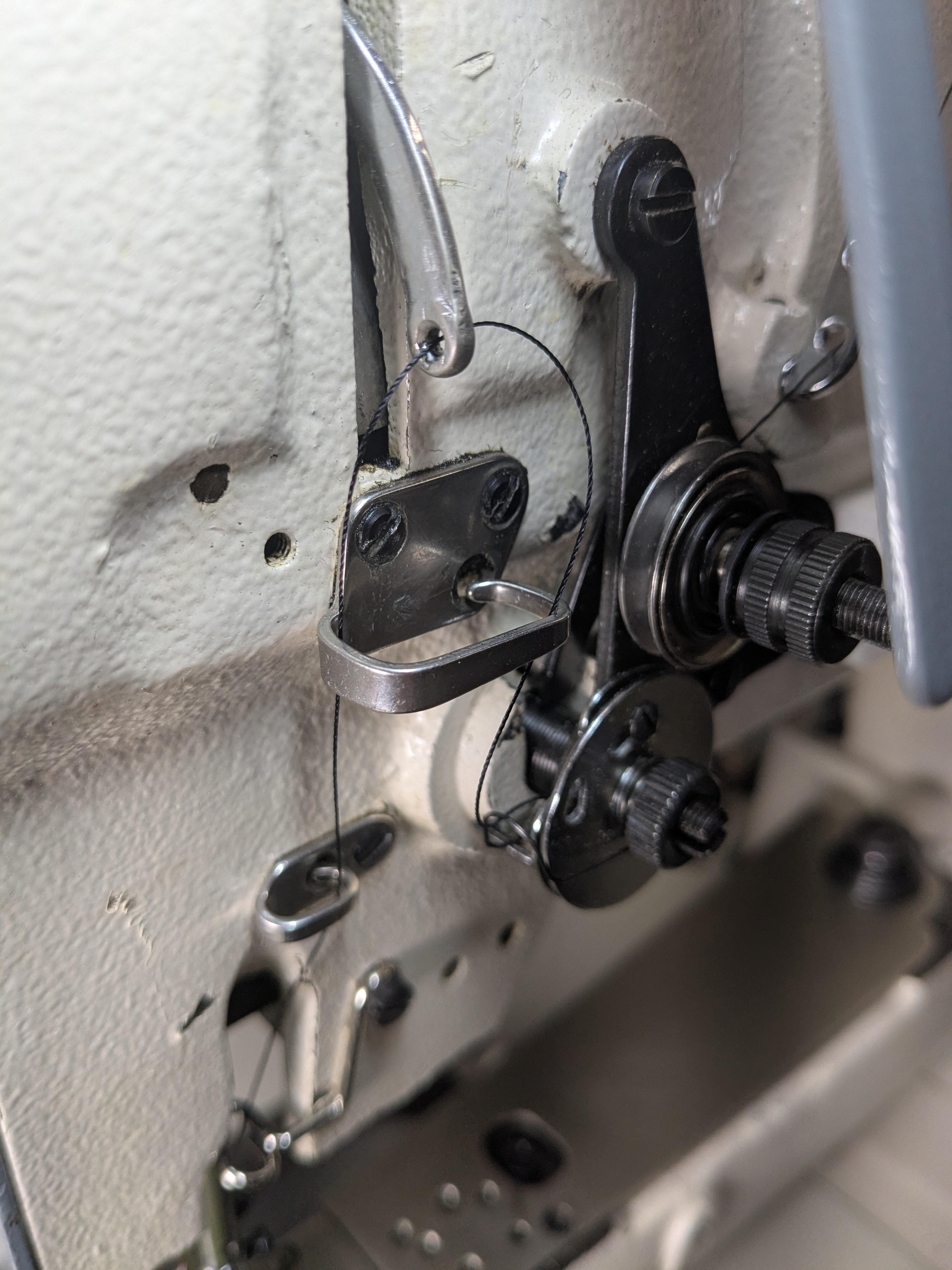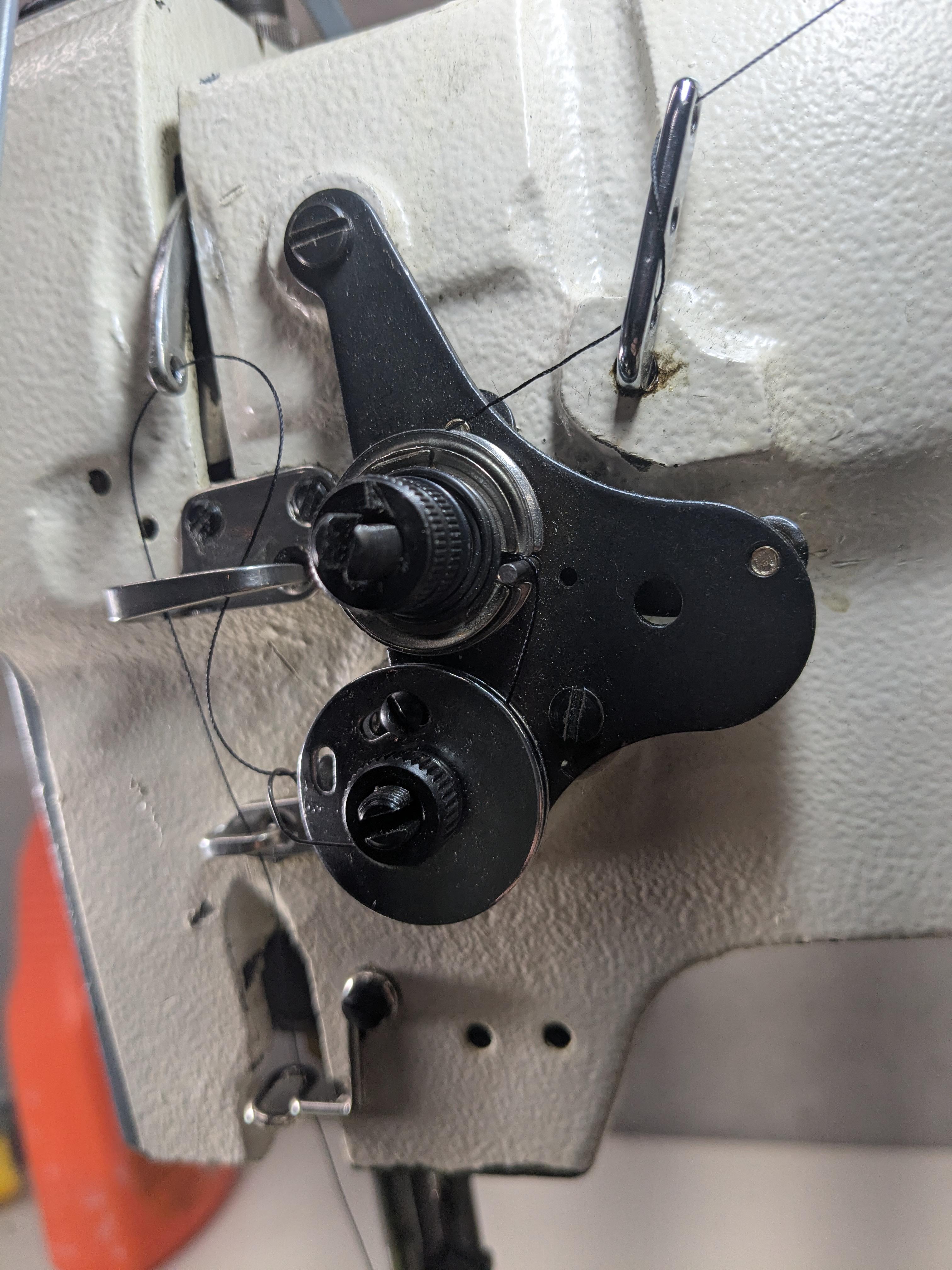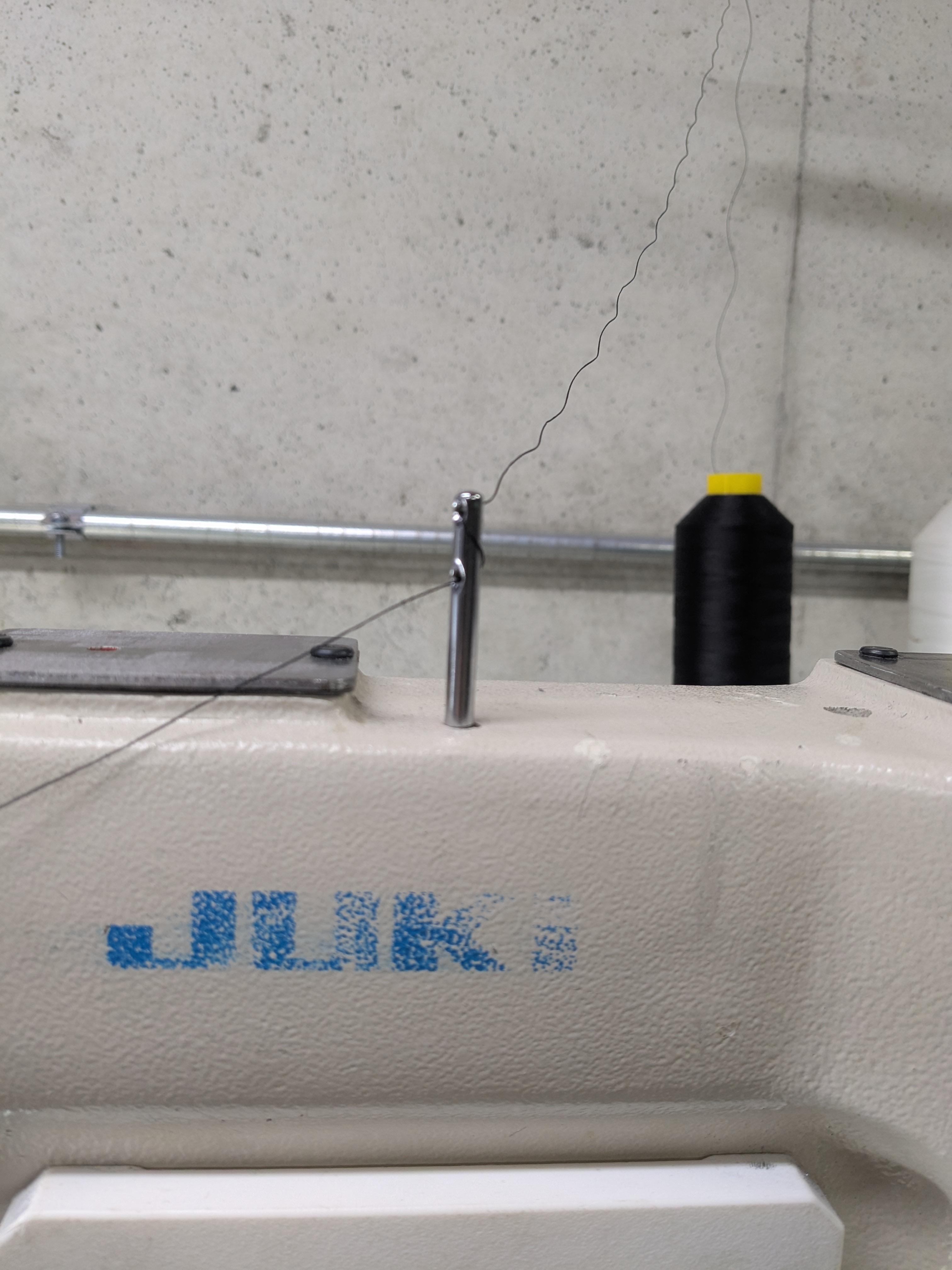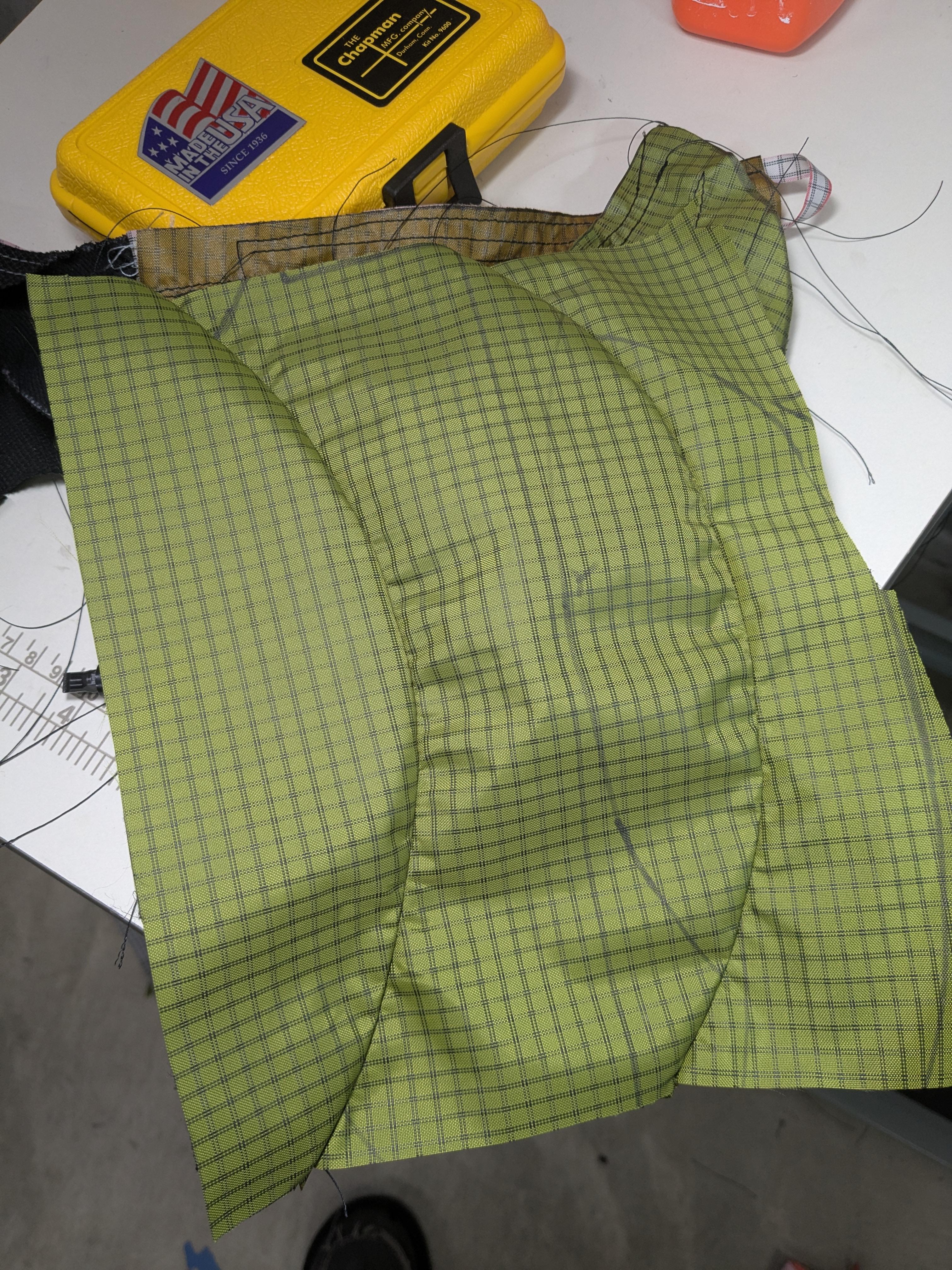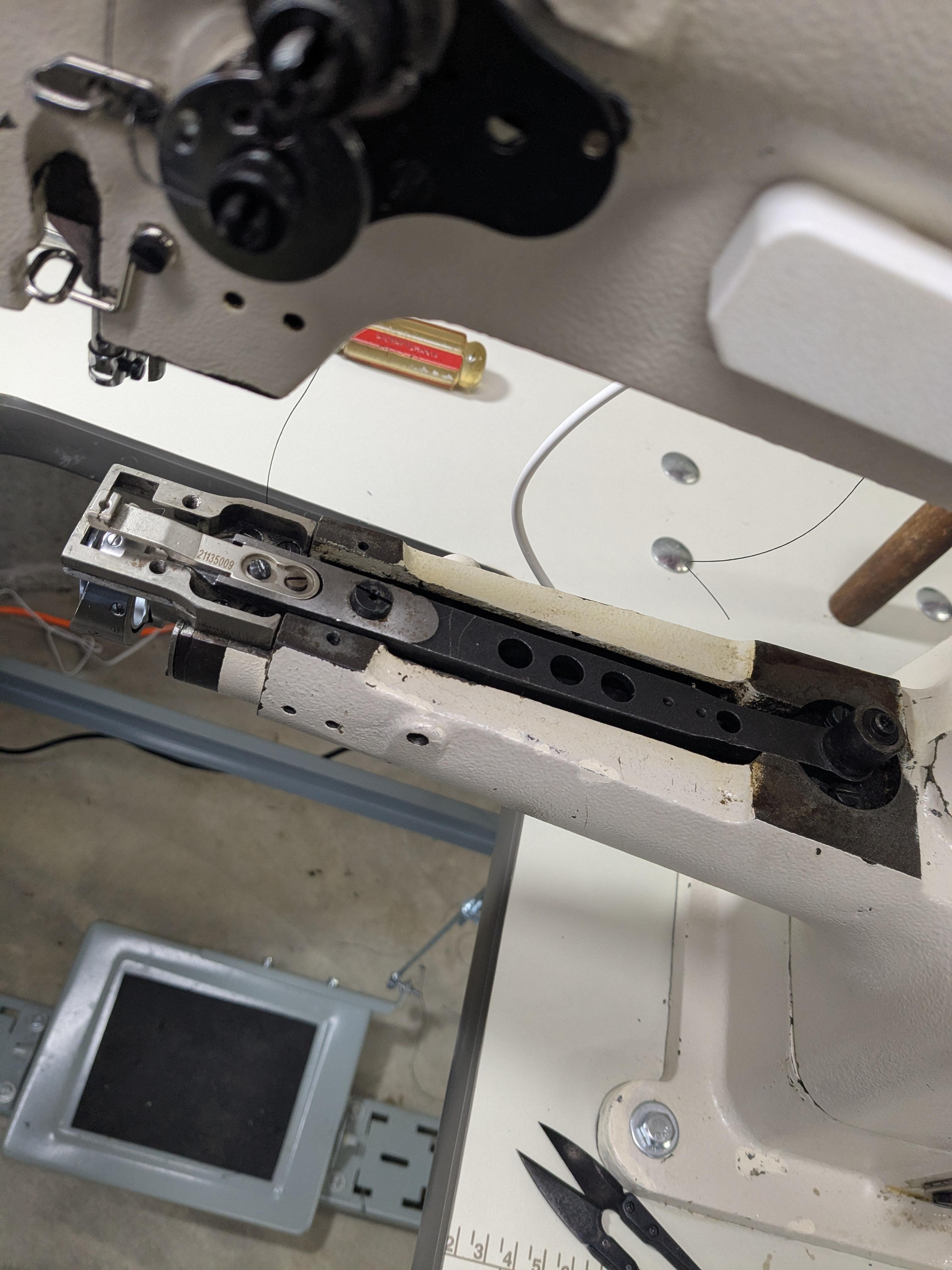
eblanche
Members-
Posts
28 -
Joined
-
Last visited
Profile Information
-
Location
New Hampshire, USA
-
Interests
lightweight outdoor gear
LW Info
-
Interested in learning about
sewing and the machines involved
-
How did you find leatherworker.net?
Google
Recent Profile Visitors
2,076 profile views
eblanche's Achievements

Member (2/4)
-
What issues are you having with the machine?
-
Bobbin thread tension and thread color
eblanche replied to Gymnast's topic in Leather Sewing Machines
Would you kindly inquire with Amann about your results, if you have a contact? Curious if they may have a response on this, whether it be normal or unnormal. Thank you for providing these results! -
I've gone through this recently with raw edge 90* binders and it wasn't long before I realized the above to be all correct and very important. Also, practice (PRACTICE? we talkin' bout PRACTICE!?!) how you are feeding the material into the binder. I went through a lot of tape, material, and time before I figured things out. I worked with a few different over the counter binders and ended up modifying my binding foot, throat plate, AND binder brackets to get my desired results. Now it works every time on smaller radius curves. This is with a synchronized Juki 246 cylinder arm.
-
I have been using the basic "sewing machine" set from Chapman Mfg. Good stuff but I do not have much experience with other quality tools. The small hand ratchet, and thumb spinner have made themselves very useful; especially with feed dogs and throat plates. All the other posters are correct though, it is important to match the sizes and having a non-tapered head also helps. https://chapmanmfg.com/pages/bits-that-dont-screw-up
-
Okay thanks! this is Amann strongbond v69. Not exactly inexpensive but willing to try others. Does the video work for anyone else?
-
Thanks KGG, I should also mention: A. I have adjusted second thread guide in different positions. I'll reposition to original as per Manuel. B. When threading the tension assembly to NOT go up and over the pin, the thread often becomes disengaged from the top tension discs, releasing tension altogether. Maybe there are multiple issues...? I used the pin as suggested in a video for a different type of machine using the same type tension assembly. Materials: yes dually noted! This machine specs suggest lighter thread/needle can be used. Idk if that directly relates to the exact types of materials. I know of many using the 1541 and similar compound machines for the same materials. Of course, this is a dsc246 and not necessarily similar enough. Noted they have thin material feed dogs available with I assume smaller needle hole. I am not currently aware any available smaller hole presser feet? When I put a similar fabric with more stiffness under the needle it does help but does not solve. And yes it does very fine with thicker assemblies. I will look into 2 c and d. I do infact use a needle feed machine as well, and it does fine with this two layers of fabric, but not totally ideal for the rest of this sewing line involving thicker parts further down the line of sewing. This 246 is primarily for binding but I'm looking to see if I can expand it's usefulness btw horizontal to elliptical feed conversion takes only 5-10 min if anyone wants to know haha Edit: does the thread twist coming off the spool look normal? Thanks a lot!
-
Hey Folks, I am having some troubles with a recently acquired machine. Juki dsc-246 using v69 bonded nylon, size 16-18 fabric R point needles and sewing two+ layers of 210d nylon. As you can see from the photos, I am getting some nasty puckering in the fabric leading to very unsightly seams! The fabric started out as two perfectly flat layers and now features waves. This is my first compound feed and cylinder machine so i first thought I was maybe causing the issues incorrectly FEEDING the fabric (I am doing some flat work here without a flatbed attachment). Now, I am not so sure that I am the cause of these puckers. The machine does sew heavier/thicker including binding work quite well. Things I have attempted to adjust: Thread tensions (bobbin tension here is almost non-existent in an attempt to alleviate the issue. Walking foot/inside presser foot pressure: adjustment do not seam to help? but with little pressures, my material slips around underneath with feet sitting on the throat plate Smaller Needle size Smaller thread: v46 I found a similar thread here which discusses a the same problem but with different materials: I am looking for guidance on what steps I should take next or to maybe start over. More adjusting needed? Still thread tension or an issue with the walking feet/feeding. What am I overlooking? The above thread discussed possibly worn out components being a factor. (Ugh hopefully not, this machine does appear to have been well used...) Which ones would maybe cause this? Thanks everyone!
-
Replacement feed dogs for my Artisan 246. Suggestions?
eblanche replied to Piko's topic in Leather Sewing Machines
Hi Piko, I buy all my needles from https://www.thethreadexchange.com/miva/merchant.mvc?Screen=CTGY&Category_Code=ndl-135X16 the thread exchange. I buy my thread from wawak... I have attached an image of the supplied feed dogs which came with my 246 from a previous photo. I can get you a closeup with dimensions tomorrow or the following day, but the P/N is visible in the second picture (please excuse the mess, converting from 'standard' to horizontal feed, for binding). 21135009 appears to be the model the CKPSMS version you purchased is based off of from the description. -
Replacement feed dogs for my Artisan 246. Suggestions?
eblanche replied to Piko's topic in Leather Sewing Machines
I dl'd them despite the risk. They seem very similar size hole. New one has a slot...not really sure what the difference in use is?? I think I posted that Juki still sells the $200+ thin material feed dogs with smaller feed dog hole but I'm not sure that is what you need. I also have a 246 so I am taking notice. IMO, changing to that feed dog will not have any difference in the hole size of the material. The needle makes the hole, so maybe using larger thread to fill the hole. *Sorry i do not remember the original message board thread so something like this may have already been mentioned. -
Recent Relics Design on Etsy has some nice looking options that work for the ls-341. I do not have first hand experience though. https://www.etsy.com/listing/1628261312/folded-edge-cylinder-arm-table-read-the?ref=shop_home_feat_2&bes=1&sts=1&logging_key=df14ac46157a5699adef0f95481e19144bc0bbad%3A1628261312
-
The following thread may be of help: Please share photos of the machine if you can.
-
Ask the seller if they can tell you which exact Juki part (#) that feed dog is based off of. I have found Asian suppliers to be receptive of questions when asked on ebay.
-
You will have to search and order the part from one of their distributers or dealers. I do believe there are some dealer sponsors of this forum, leatherworker.net who work with Juki, but not positive. Where are you located?
-
It looks like Juki makes a feed dog for thin needles for the 246: 21135108. https://www.juki.co.jp/industrial_e/products_e/lether_e/cylinderbed_e/detail.php?cd=DSC-244_DSC-245_DSC-245-7_DSC-246_DSC-246-7_E Even, both Jacksew and Universal sewing websites in the USA list the part. In stock at jacksew, order from Japan at U.S. Bad news: cost $200+. There are several makers/dist. of 246 clones, you could try contacting them to see if they provide thin needle feed dogs.
-
The DSC-245 uses a small size bobbin (I forget what size exactly) but the 341 uses style M larger size bobbin. You have to jump to the DSC-246 for M size bobbin. It seems most parts for the dsc series are readily available but have to order from Japan - 3-4 weeks. This is my experience for ordering a half dozen parts for a dsc-246. Yes, the DSC245 is more light duty than the 341. 21/69 thread for the 245 compared to 23/92 for the dsc-246. That's pretty light but I have never worked with leather. Engineers manuel for 341 versions: chrome-extension://efaidnbmnnnibpcajpcglclefindmkaj/https://semsi.com.mx/Manuales/JUKI/LS-341N,%20LS-341N-7%20Engineer%20Manual.pdf lists needle size as 14-24 for the non-auto version.


